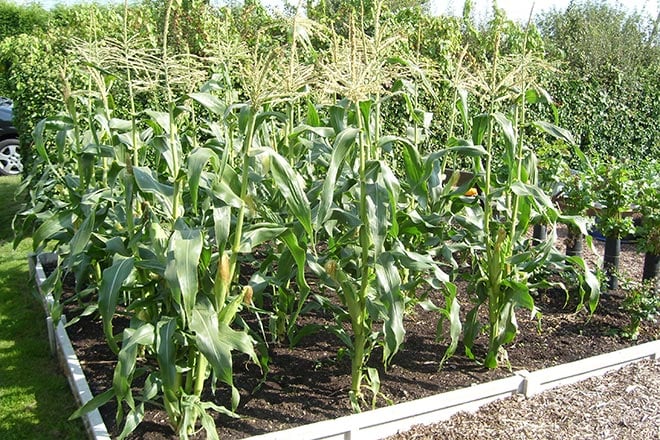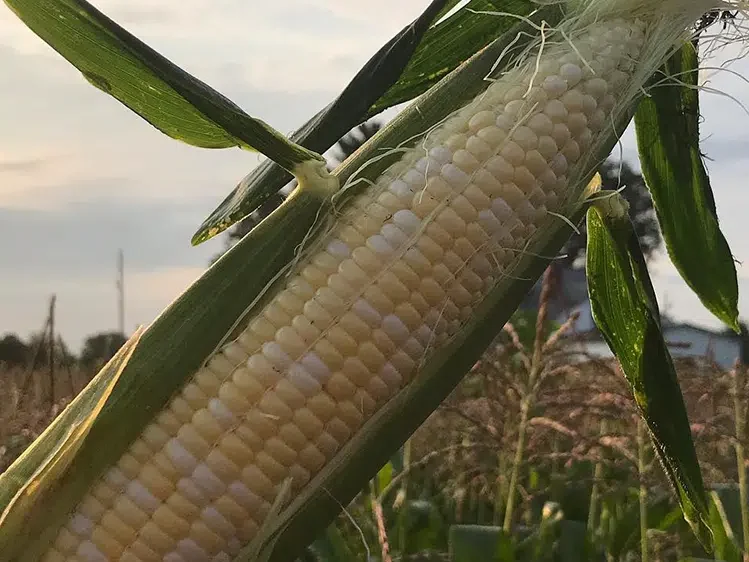There’s something incredibly satisfying about growing your own sweetcorn. Watching the stalks reach towards the sky and finally harvesting the sun-warmed cobs is a summer highlight for many gardeners across the UK. Whether you’re a novice gardener dipping your toes into the world of homegrown veggies or a seasoned green thumb, sweetcorn offers a rewarding and delicious gardening adventure.
At Grown Local, we’re passionate about helping you achieve gardening success, starting with premium garden products and the finest seeds. In this guide, we’ll walk you through everything you need to know about growing sweetcorn from seed in the UK, spotlighting our top sweetcorn picks and essential gardening tips to ensure a bountiful harvest.
Understanding Sweetcorn Varieties in the UK: The Sweet Spectrum
Sweetcorn comes in several delightful varieties, each with its unique taste and growing needs:
- Standard Sweetcorn: Known for its traditional flavour and texture, this variety is a garden classic. However, it’s best consumed fresh from the garden, as it quickly loses its sweetness.
- Supersweet (sh2): Boasting up to twice the sugar content of standard types, supersweet varieties are a treat for the taste buds. They’re more forgiving in terms of harvest and storage times but require a bit warmer soil for planting.
- Sugar-Enhanced (se): Striking a perfect balance, sugar-enhanced sweetcorn offers enhanced sweetness and a tender bite. It has a slightly longer window for harvest compared to standard varieties.
- Synergistic: The latest in sweetcorn innovation, these varieties blend the best traits of supersweet and sugar-enhanced types, resulting in even higher sugar levels and a tender texture.
Choosing the Right Seeds

For gardeners eager to experience the best of what sweetcorn can offer, we recommend our “Sweetcorn Incredible F1” and “Sweetcorn Ambrosia Seeds”. These popular varieties stand out for their exceptional flavour and growing performance, available directly from Grown Local.
How to Grow Sweetcorn Successfully
Seed Starting Essentials
Given the UK’s unpredictable spring weather, starting your sweetcorn seeds indoors can give your crops a head start. The Grown Local Deep Root Success Kit is an excellent choice for this, designed to encourage deep, healthy root development that translates to stronger, more resilient plants once transplanted outdoors.
Before planting, enrich your soil with a good feed to ensure your sweetcorn has all the nutrients it needs to thrive. A well-prepared bed will make a significant difference in the growth and health of your plants.
Planting Outdoors

When the risk of frost has passed and soil temperatures warm, it’s time to move your sweetcorn seedlings outside. Choose a sunny spot with well-draining soil, and remember, sweetcorn loves company. Planting in blocks rather than rows encourages better pollination, thanks to the wind carrying pollen between plants. Ensure your sweetcorn gets plenty of water, especially during hot spells, and feed regularly to support growth.
The Importance of Wind in Pollination
Sweetcorn relies heavily on wind for pollination, so your planting strategy should maximise exposure to natural airflows. This ensures each cob is fully pollinated and develops a full set of kernels, critical for that perfect harvest.
Care and Maintenance
Protecting Your Sweetcorn from Pests and Diseases
Growing sweetcorn can be immensely rewarding, but like all garden plants, it faces threats from pests and diseases. Being aware of these challenges and knowing how to manage them can make all the difference in the health and yield of your sweetcorn crop.
Corn Rust and Smut
- Corn Rust is caused by the fungus Puccinia sorghi and appears as reddish to orange pustules on the leaves and stalks. It thrives in warm, moist conditions.
- Corn Smut (Ustilago maydis) creates swollen, grey growths on kernels and plant parts. Interestingly, while researching for this blog post, I learned that corn smut is considered a delicacy in Mexico, known as huitlacoche. It’s prized for its rich, smoky flavour and is used in various traditional dishes, offering a unique gourmet experience.

Common Pests
- Corn Earworms feed on corn ears, burrowing into the kernels.
- Birds may peck at ripening corn. Employ netting or scare tactics to protect your crops.
Prevention and Control
Adopt preventive measures such as crop rotation, maintaining healthy soil, and selecting resistant varieties to reduce risks. Organic controls and encouraging natural predators can also help in maintaining the health of your sweetcorn.
Harvesting Your Sweetcorn
:max_bytes(150000):strip_icc()/onehandgrabscorninstalk-51cedb1b45374053a835ddb010351aab.jpg)
The anticipation builds as your sweetcorn nears harvest. Look for silky tassels turning brown and start to wither, and the kernels are plump, tender, and filled with milky juice when pierced. Gently peel back a portion of the husk to check if it’s ready. Early types may be ready to pick sooner, so keep a close eye on them as the season progresses.
Why Mixing Sweetcorn Types Might Not Be Sweet
While variety is the spice of life, mixing different types of sweetcorn too closely can lead to cross-pollination issues, affecting the sweetness and texture of your corn. I learned this the hard way, diving headfirst with about five different sweetcorn varieties all together, which resulted in a mix of less sweet and oddly textured cobs due to unexpected cross-pollination. Strategic garden planning can help maintain the integrity of each variety’s unique qualities, ensuring they flourish without interfering with each other.
In Conclusion
Growing sweetcorn in the UK is a summer delight that rewards gardeners with fresh, sweet flavours straight from the garden. By choosing the right varieties and providing them with a little care and attention, including feeding the soil before planting and ensuring plants are well-watered and fed during growth, you can enjoy the fruits of your labour by summer’s end. Don’t forget to visit Grown Local for all your vegetable and flower seed needs, where quality and gardening success go hand in hand.
Happy Gardening!
About the Author
Iain is a passionate gardener and writer, utilizing AI assistance to overcome the challenges of dyslexia in his work. His mission is to make gardening accessible and enjoyable for everyone, sharing insights and tips through his engaging articles. Iain’s expertise and dedication shine in his efforts to bring the joys of gardening to a wider audience.

